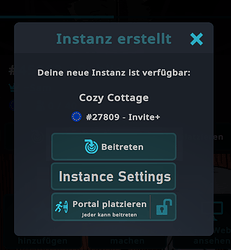I don’t think it’s a bad update by any means. I just think the instance settings thing seems to have resulted from solving two problems separately, instead of as one whole solution.
Edit: I guess to provide some context:
World creators can set max or min avatar height to help prevent users from breaking their world, or even disable it completely. They can set recommended max, full max, all factors that change how people interact with a world. Plus like I said earlier, special surfaces to restrict stickers to.
To me, there isn’t a whole lot of difference between Public, GroupPublic, Group+, and Friends+.
So, if the world creator can change these settings but they only apply to public instances, why even allow world creators to change it at all if it’s just going to be overridden?
And then if world creators don’t want people using stickers in their world, they’d have to use that special surface and place it somewhere people can’t access. Even the drone can be enabled (iirc) (which could be abused for game worlds).
So my thoughts are: if the instance creators can override the defaults to enable them (which is most instance types on VRChat to my knowledge), then it doesn’t make sense for the world creator to be able to adjust that at all.
I do think instance owners should be able to disable them if they are enabled by default. But not the other way around.
And really, if these options are enabled by default (which they currently are), it shouldn’t be a big deal.
For example: I have a movie watching world. It is really clean and has surround sound, and it’s whole purpose is to watch movies. Because of the lighting, you can’t even see stickers that well, if at all.
I am considering disabling some of these features so movies or any media enjoyment aren’t interrupted, since those features aren’t really necessary in this world. Sure, anyone can access the world, but the wotld also serves a specific purpose. If people don’t like that my world disables those features, they can absolutely just not use my world.
Edit: I also guess to directly answer the question, “who has authority over an instance, and when?”
The world creator defines the entire experience of the world in the first place. Worlds (especially game worlds) inherently control instance behavior through their mechanics or systems. To me, I see these toggle-able features as an extension of that.
